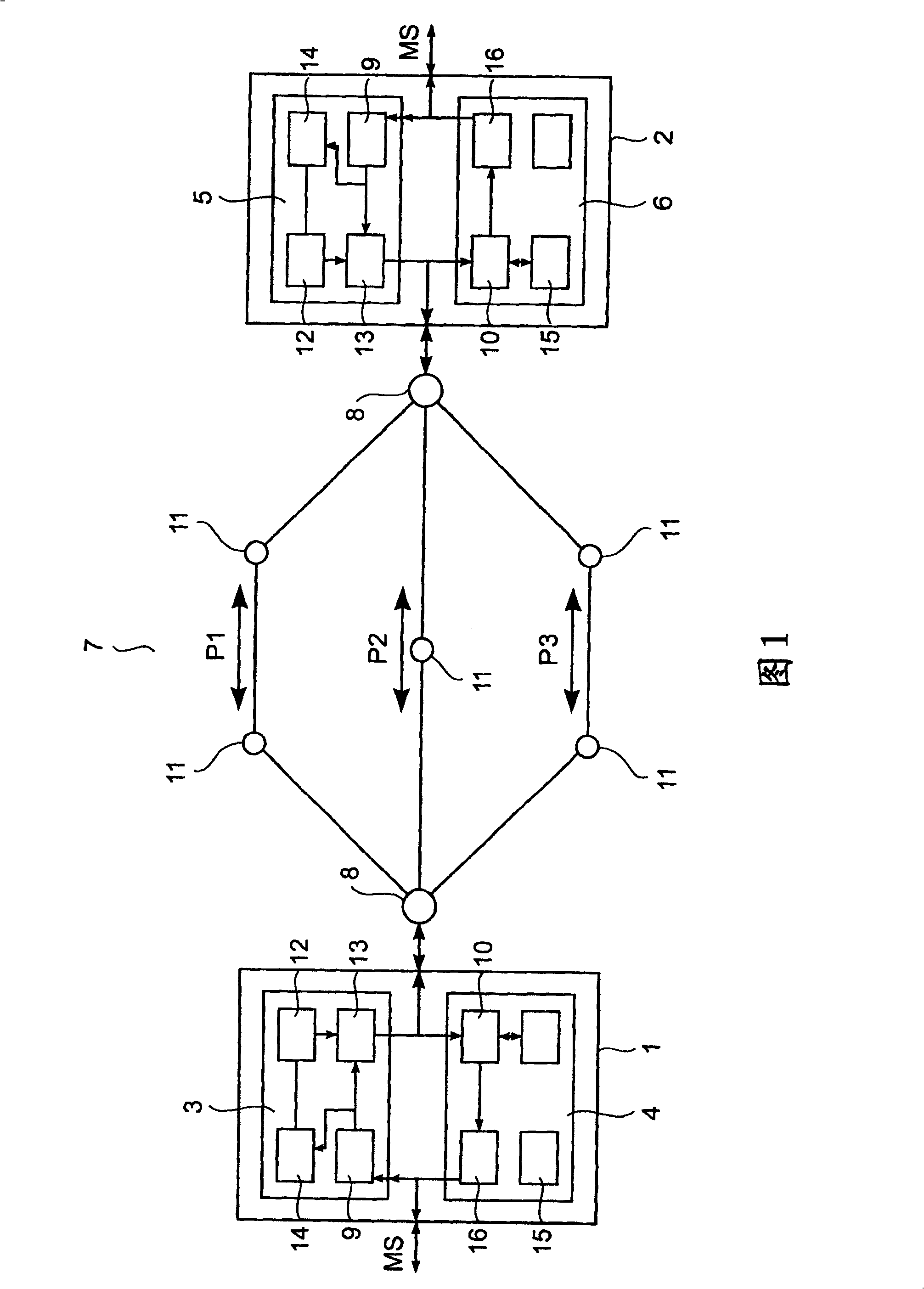Method and a transceiver device for transmitting media data via a network
A technology for media data and media transmission, applied in the field of media data transmission via network, can solve the problems of increasing jitter, increasing delay, continuous media stream not being able to tolerate delay and jitter, etc.
- Summary
- Abstract
- Description
- Claims
- Application Information
AI Technical Summary
Problems solved by technology
Method used
Image
Examples
Embodiment Construction
[0027] For a better understanding of the invention, together with other and further features and advantages thereof, reference is made to the following description taken in conjunction with the accompanying drawings and as to the scope of the invention which shall be pointed out in the appended claims.
[0028] The only figure shows a simplified network with a first transceiver device 1 and a second transceiver device 2 . The first transceiver device 1 comprises a first transmitter device 3 and a first receiver device 4 and the second transceiver device 2 comprises a second transmitter device 5 and a second receiver device 6 . The first and second transceiver devices 1 , 2 are connected via a network 7 . The transmitter device 3 , 5 and the receiver device 4 , 6 are typically implemented as one device with two distinct transmit and receive functions in a common transceiver device 1 , 2 . In order to allow the transceiver device 1, 2 to cope with rapid succession of media stre...
PUM
 Login to View More
Login to View More Abstract
Description
Claims
Application Information
 Login to View More
Login to View More - R&D
- Intellectual Property
- Life Sciences
- Materials
- Tech Scout
- Unparalleled Data Quality
- Higher Quality Content
- 60% Fewer Hallucinations
Browse by: Latest US Patents, China's latest patents, Technical Efficacy Thesaurus, Application Domain, Technology Topic, Popular Technical Reports.
© 2025 PatSnap. All rights reserved.Legal|Privacy policy|Modern Slavery Act Transparency Statement|Sitemap|About US| Contact US: help@patsnap.com

